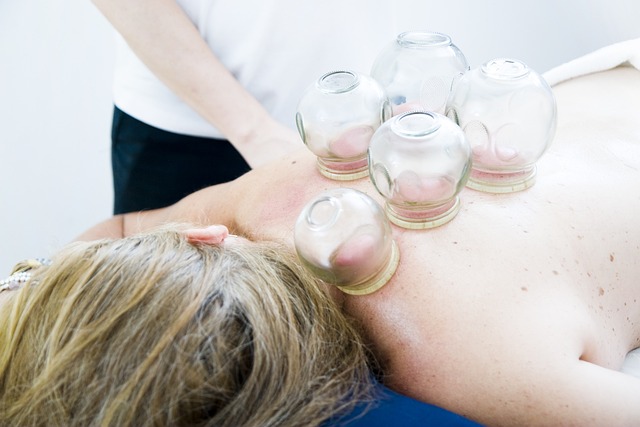Cold water therapy, involving short immersions in cold (50-60°F) water, is a popular recovery tool for athletes worldwide. It constricts blood vessels to reduce muscle inflammation and pain, then dilates them to improve circulation and deliver nutrients, expediting recovery. This natural method can enhance performance by enabling athletes to train harder and recover faster, reducing delayed onset muscle soreness (DOMS) and injury risk. Professional sports teams increasingly incorporate cold plunges into routines, with athletes reporting improved overall performance.
“Unleash your athletic potential and bid farewell to injuries with the power of regular cold plunge therapy. This natural recovery tool has gained popularity among athletes worldwide, offering a science-backed approach to muscle recovery. From understanding the mechanics of cold water therapy to real-life success stories, this article guides you through incorporating cold plunges into your training routine. Discover how this simple yet effective method enhances athletic performance and reduces injury risks.”
Understanding Cold Plunge Therapy: A Natural Recovery Tool for Athletes
Cold plunge therapy, also known as cold water therapy, is a natural recovery tool that has gained significant popularity among athletes. This method involves immersing oneself in cold water, typically at temperatures ranging from 50 to 60°F (10 to 15°C), for a short period of time. It’s particularly effective for muscle soreness and inflammation, common issues faced by athletes post-workout or after intense training sessions.
By subjecting the body to cold water, blood vessels constrict, reducing blood flow to the affected areas. This process helps minimize swelling and pain. After the cold exposure, the vessels dilate again, promoting increased blood circulation and transporting essential nutrients and oxygen to the muscles, facilitating faster recovery. Many athletes incorporate cold plunge therapy into their routines as a safe and natural way to enhance performance and shorten recovery times between training sessions.
The Science Behind Cold Water Therapy and Its Impact on Muscle Recovery
Cold water therapy, or more commonly known as a cold plunge, has gained popularity among athletes and fitness enthusiasts as a natural way to aid muscle recovery. The science behind this practice is rooted in the body’s response to extreme temperature changes. When you immerse yourself in cold water, typically below 59°F (15°C), blood vessels constrict, reducing blood flow to the extremities and core. This process helps minimize inflammation and swelling in overworked muscles. By restricting blood flow, cold therapy can effectively reduce metabolic waste products that contribute to muscle soreness and fatigue.
For athletes, incorporating regular cold water therapy sessions into their routine can significantly enhance post-workout recovery. The cold temperature provides a temporary pain relief effect, allowing athletes to train harder and more frequently without experiencing excessive muscle discomfort. Moreover, it helps in reducing delayed onset muscle soreness (DOMS), a common issue after intense exercise, enabling athletes to return to training faster and with improved performance. This therapeutic approach is a game-changer for those seeking natural remedies to support their active lifestyle.
Incorporating Cold Plunges into Your Training Routine: Tips and Best Practices
Incorporating cold plunges into your training routine can significantly enhance performance and recovery, especially for athletes looking to optimize their fitness journey. Cold water therapy for athletes is a game-changer in injury prevention and post-workout restoration. The key lies in understanding how and when to incorporate these sessions.
Start by gradually integrating cold plunges after intense workouts or competitions. A quick dip in cold water can help reduce muscle inflammation and alleviate post-exercise soreness. Aim for 10–15 minutes under icy waters, ensuring proper safety precautions. Always ensure your body temperature is regulated before entering cold environments; shivering indicates your core temperature needs to stabilize first. Consider alternating between ice baths and warm showers to maximize benefits, promoting blood flow and reducing muscle stiffness.
Real-Life Success Stories: How Cold Water Therapy Enhances Athletic Performance and Reduces Injuries
Cold water therapy, also known as a cold plunge or ice bath, has gained significant attention in the athletic community for its potential to enhance performance and reduce injuries. Numerous athletes across various disciplines have shared their success stories, highlighting the transformative power of this simple yet effective practice.
For instance, many professional sports teams incorporate cold water therapy into their recovery routines after intense training sessions or competitions. Athletes report reduced muscle soreness, quicker recovery times, and improved overall performance. A study involving marathon runners showed that those who incorporated regular cold plunges into their post-run routine experienced significantly less delayed onset muscle soreness (DOMS) compared to those who didn’t. This indicates that cold water therapy can play a crucial role in preventing common athletic injuries caused by excessive muscle strain. Additionally, cold therapy has been shown to reduce inflammation, which is often at the root of many sports-related injuries. These real-life examples demonstrate that cold water therapy for athletes is not just a trend but a valuable tool to enhance their physical well-being and performance on the field.
Cold water therapy, or regular cold plunge sessions, has emerged as a powerful tool for athletes looking to enhance their recovery process and reduce injury risks. By immersing oneself in cold water, athletes can stimulate their bodies’ natural healing mechanisms, promote faster muscle recovery, and improve overall performance. The science behind this method is compelling, and numerous real-life success stories attest to its effectiveness. Incorporating cold plunges into training routines, as discussed in this article, provides practical tips for athletes to harness the benefits of cold water therapy and stay ahead of injuries. For athletes seeking a natural, efficient recovery method, cold water therapy is indeed a game-changer.
